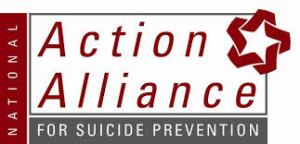A Prioritized Research Agenda for Suicide Prevention: An Action Plan to Save Lives is a key piece to directing resources for research with preventing suicide in the US. With its list of objectives, the plan highlights what the short and long term goals are for the agenda plan, one goal being to save 20,000 in suicide attempt/deaths in the next five years. On the National Action Alliance for Suicide Prevention website there is listed four main priorities that have evolved from the agenda plan that will help change the US and how it views suicide through media influence, change health care policies to work in favor of those who are at-risk for suicide, and lower the number of suicides in the nation.
Goal number three is the one that jumped out at me: Change the public conversation around suicide and suicide prevention. While I do agree with the agenda plan and what its main goals are, while I’m not a very political person or have a huge nation recognition, this is one priority that anyone can get involved in and try to change as an advocate. The US is supposed to be one huge, supporting community where if you need help you will receive it. Suicide, however, is not a part of this description. It is still something being kept in the dark that people are afraid to talk about, or just plain don’t care. It is from lack of understanding, and seeing suicide in a negative light that affects how people receive help, or those who are afraid to do so. It is a serious matter to consider—someone’s life is literally on the line, and if people aren’t aware of the signs, someone’s life can be lost. Our nation needs to be educated on how to recognize these signs and know which resources are available to help others, or even themselves.
Talking to someone who is at-risk for suicide is not always the easiest thing in the world. People may not know what to say, how to act, and what resources to provide. Luckily, anyone can learn what to do if they find themselves in this situation. The Suicide Prevention Resource Center has online fact sheets that gives different scenarios from interacting with a co-worker to managers and other professionals who may be at-risk, and provides tips on what to do. It lists statistics that everyone should know about suicide, such as suicide being the number 10 reason for death in the past years, and over 38,000 people committed suicide each year. Doesn’t seem much to you? How about the million people each year who attempt and fail, and now have to face the harsh criticism and lack of care that suicide survivors have to deal with.
While the idea may seem simple, these kind of tools that every person should know has enough impact to save a life. Basic knowledge and understanding how people view suicide can change the outcome for those at-risk, and how the nation views suicide. We can achieve this goal of being a supporting community, and eventually end the negative views against suicide. This isn’t going to end overnight, but it is the first major step down the path to ending suicide that this country needs.

